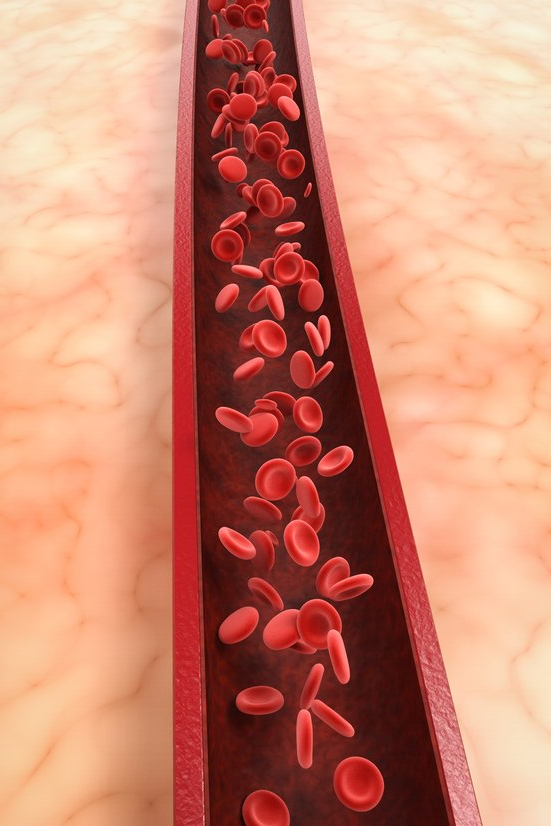
Lipid Disorder
Dyslipidemia is a high level of cholesterol and/or triglycerides or a low level of high-density lipoprotein (HDL) cholesterol.
- Lifestyle, genetics, disorders (such as low thyroid hormone levels or kidney disease), medications, or a combination can contribute.
- Atherosclerosis can result, causing angina, heart attacks, strokes, and peripheral arterial disease. Doctors measure levels of triglycerides and the various types of cholesterol in the blood.
- Exercise, dietary changes, and drugs can be effective.
Cholesterol is an essential component of cell membranes, of brain and nerve cells, and of bile, which helps the body absorb fats and fat-soluble vitamins. The body uses cholesterol to make vitamin D and various hormones, such as estrogen, testosterone, and cortisol. The body can produce all the cholesterol that it needs, but it also obtains cholesterol from food.
Triglycerides, which are contained in fat cells, can be broken down, then used to provide energy for the body’s metabolic processes, including growth. Triglycerides are produced in the intestine and liver from smaller fats called fatty acids. Some types of fatty acids are made by the body, but others must be obtained from food.
- Levels of lipoproteins and therefore lipids, particularly low-density lipoprotein (LDL) cholesterol, increase slightly as people age.
- Levels are normally slightly higher in men than in women, but levels increase in women after menopause. The increase in levels of lipoproteins that occurs with age can result in dyslipidemia.
- The risk of developing atherosclerosis increases as the total cholesterol level (which includes LDL cholesterol, HDL cholesterol, and VLDL cholesterol) increases, even if the level is not high enough to be considered dyslipidemia. Atherosclerosis can affect the arteries that supply blood to the heart (causing coronary artery disease), those that supply blood to the brain (causing stroke), and those that supply the rest of the body (causing peripheral arterial disease).
- Therefore, having a high total cholesterol level also increases the risk of having a heart attack or stroke.
-
Factors that cause dyslipidemia are categorized into
⦾ Primary causes: Genetic (hereditary) causes
⦾ Secondary causes: Lifestyle and other causes
Do You Know?
Body type does not predict cholesterol levels. Some overweight people have low cholesterol levels, and some thin people have high cholesterol levels.
Consequences of primary dyslipidemias
Familial hypercholesterolemia
In familial hypercholesterolemia, the total cholesterol level is high. People may have inherited one abnormal gene or they may have inherited two abnormal genes, one from each parent. People who have two abnormal genes (homozygotes) are more severely affected than people who have only one abnormal gene (heterozygotes). About 1 in 200 people are heterozygotes, and 1 in 250,000 to 1 in 1 million people are homozygotes.
Affected people may have fatty deposits (eruptive xanthomas) in the tendons
Secondary dyslipidemia
Secondary causes contribute to many cases of dyslipidemia.
The most important secondary cause of dyslipidemia is
- A sedentary lifestyle with excessive dietary intake of total calories, saturated fat, cholesterol, and trans fats (see sidebar Types of Fat )
Some other common secondary causes include the following:
- Having diabetes mellitus
- Consuming large amounts of alcohol
Having chronic kidney disease - Having hypothyroidism
- Having primary biliary cirrhosis
Some disorders cause lipid levels to increase. Diabetes that is poorly controlled or chronic kidney disease can cause total cholesterol levels or triglyceride levels to increase.
Some liver disorders (particularly primary biliary cirrhosis) and an underactive thyroid gland (hypothyroidism) can cause the total cholesterol level to increase.
Cigarette smoking, HIV infection, poorly controlled diabetes, or kidney disorders (such as nephrotic syndrome) may contribute to a low HDL cholesterol level.
Medications such as beta-blockers and anabolic steroids can lower the HDL cholesterol level.

- High lipid levels in the blood usually cause no symptoms.
Occasionally, when levels are particularly high, fat is deposited in the skin and tendons and forms bumps called eruptive xanthomas. - Sometimes people develop opaque white or gray rings at the edge of the cornea.
- Very high triglyceride levels can cause the liver or spleen to enlarge, a tingling or burning sensation in the hands and feet, difficulty breathing, and confusion and may increase the risk of developing pancreatitis.
- Pancreatitis can cause severe abdominal pain and is occasionally fatal.
- Levels of total cholesterol, LDL cholesterol, HDL cholesterol, and triglycerides—the lipid profile—are measured in a blood sample.
- Because consuming food or beverages may cause triglyceride levels to increase temporarily, people must fast at least 12 hours before the blood sample is taken.
- Lose weight
- Exercise
- Decrease saturated fats in the diet
- Often lipid-lowering drugs
Regular physical activity can help lower triglyceride levels and increase the HDL cholesterol level. An example is walking briskly for at least 30 minutes daily.
Do You Know?
Eating oat bran, oatmeal, beans, peas, rice bran, barley, citrus fruits, strawberries, and apple pulp can help lower cholesterol.
